Canyons
Waterfalls
Canyons
Waterfalls
To the south and west are the Mediterranean and Aegean Seas respectively, to the north is the black sea. The inland waters of the Dardanelles, the Sea of Marmara and the Bosphorus divide Europe from Asia.
Turks have named the sea in the north as Black Sea and the sea in the west as Mediterranean Sea in the west. so these two colors, Black and White, have their deep meanings.
https://www.agaoglulevent.com/
Peninsulas: https://en.m.wikipedia.org/wiki/List_of_peninsulas_of_Turkey
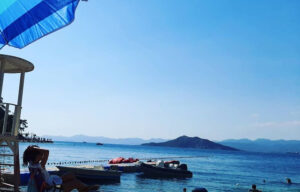
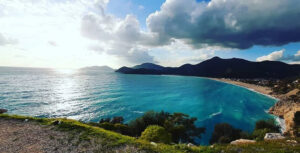
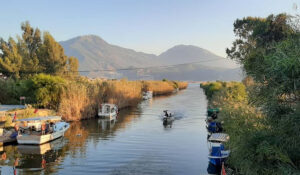
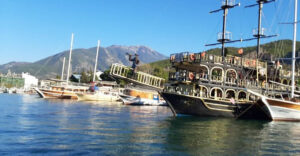
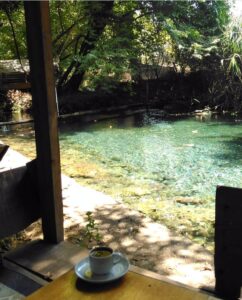
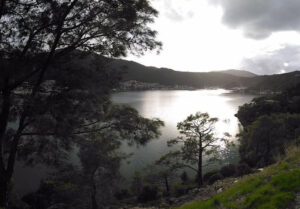
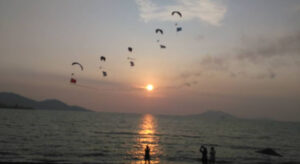
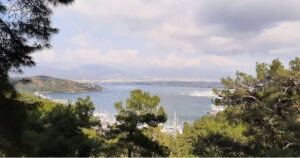
Beaches
Turkey is called Asia Minor because the geographical rectangular shape of Turkey looks like Great Asia continent. In western, eastern, southern and northern directions mountain series are intensive and in the middle there are deep steppes. This is the same pattern same picture in Asia minor as well.
Mountains consist also deep philosophy in in Turkish understanding. And then this comes from central Asia high mountains as well and then. Monasteries in the mountains in Turkey and there is Uludağ in Bursw City it was a very religious it is deeply religious meaning.
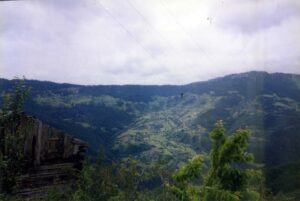
Noah legend has happened in in the in the mountain in Eastern Mountain this legend has happened in today’s turkey in there in the history.
Cappadocia region in Central Anatolia is famous with your chimneys and then with their underground caves to to protect the first Christian in Centerville thank you so this is a geographical shapes also give way to life to protect the religion of the people.
Fertile plains fringe the coast, mountain ranges separate them from the high Central plateau. 19 Mountains or over 4100 m high; of them Mount Ararat (Ağrı Dağı) is the highest at 5073 meters.
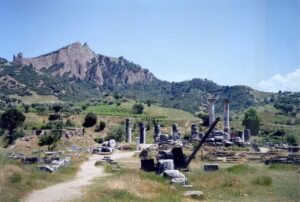
Taurus Mountains
Karacadağ Mountains
Plains: Çukurova, Tarsus, Antep, Diyarbakır, Mardin. Thrace Plain. Konya Plain.
Cukurova in Adana city is more fertile than the plains around Nile river in Egypt.
Valleys:
https://www.gruppal.com/blog/turkiye-nin-nefes-kesen-vadileri
https://tr.m.wikipedia.org/wiki/Kategori:Türkiye%27deki_vadiler
Kapadokya Vadisi:
https://www.google.com.tr/search?q=kapadokya+vadisi&ie=UTF-8&oe=UTF-8&hl=tr-tr&client=safari
Cappadocia Valleys
https://www.google.com.tr/search?q=cappadocia+valleys&ie=UTF-8&oe=UTF-8&hl=tr-tr&client=safari
National Parks:
Roman law; It was written in 3 periods and always in ISTANBUL.
1. The contribution of Justinian (d. 565), which still remains the most influential in Western Europe and elsewhere; Roman Law, which is the basis of private law in modern states today, and the studies carried out to ensure that the private law, which was in force in the Eastern Roman country at that time with the orders of Justinian, but based on the rules and laws that were put forward in very different periods, is applied in all its former pure form as a single order in the entire empire. has been.
As a result of these studies, which started with the order of Justinian I, the legalization movement, the special Roman Law that was applied until that time was collected in a corpus of laws called Corpus Juris Civilis (529-534). It was prepared in 5 years. This work was made possible by the efforts of Tribonianus, who was generally the “Questor” (Roman civil servant who was the head of the Roman central government office like the Court of Accounts).
2. Suleiman I (6 November 1494, Trabzon – 7 September 1566, Zigetvar), the tenth sultan of the Ottoman Empire and the 89th Islamic caliph. He is also known as Suleiman the Magnificent in the West and Suleiman the Magnificent in the East, referring to his just administration.
3. Mecelle (1868-1876) was prepared in 8 years; Ahmet Cevdet Pasha
“The most primordial law in the European continent is the Roman law, which was organized and codified by a community of ilmiyye in the city of Constantinople (Istanbul). It is the basis of European laws and is famous and respected everywhere. But it is not like Mecelle-i Ahkam-i Adliyye. There are many differences (between) in their brains. Because it was made by the grace of five or six law-abiding persons. This, on the other hand, has been adopted (taken) from the sharia-i garra, which is divinely appointed (by Allah) by the help of five or six jurists. ” Ahmet Cevdet Pasha
A person from the European legal profession, who this time compared Mecelle with the Roman law and looked at both of them with the eye of a human work (only a human work) said:
‘Laws were made twice in the world through the community of ilmiyye. Both happened in Istanbul. Secondly, due to its arrangement and regularity, and the good manners and connection (good arrangement) of the message (of the matters in it), it is very admirable and superior (superior and preferable) to the former. Even the difference in their brains is a measure (measurement) of how many steps a person has taken in the world of civilization from that century to this century.”
ŞEYH BEDREDDİN 1357-1420 Rumeli Edirne Neighborhood Turkey The Ottoman Sufi, philosopher and kazasker of the Vahdet-i Body school of Sufi-Islamic Sufism dealt with power-verb, matter-spirit duality, God-universe relations in his work Varidat. The thinker, who believes that problems can be avoided with unity of the body, shares his philosophical discourses in his work.
HOCA SINAN PASHA 1440-1486 Rumeli Edirne Turkey Fatih Era Scholars, Pioneer of Divan Prose and Mathematics Scholar. His father is the famous Hızır Bey, who served as the first judge of Istanbul. He is a thinker belonging to the Molla Fanari school and is accepted as the representative of the philosophical theological understanding. In his youth, he was interested in ancient Greek philosophy. He even turned to Sufism after his father, Hızır Bey, was angry because he had a tendency to shift towards septicism for a while.
İBN KEMAL (KEMALPAŞAZADE AHMET ŞEMSETTIN) 1468-1533 Rumeli Edirne Turkey Şeyhülislam, Historian, Religious Scholar Tevarih Ali Osman
CERRAHZADE 1495-1571 Rumeli Edirne Turkey Scholar, Veli
MUHYİ İ GÜLŞENİ 1528-1604 Rumeli Edirne, Menâkıb-ı İbrahim Gülşenî. Muhyî-i Gülşenî. One of the works written by Muhyî-i Gülşenî, one of the important figures of the 16th century and one of the most famous names in our literature-culture life, is the work named Menâkıb-ı İbrahim Gülşenî, which was written at the request of his sheikh Ahmed Hayâlî.
LEVNÎ 1600s-1732 Rumeli Edirne Turkey Ottoman Miniature Artist, Folk Poet, late 17th century, Edirne-1732, Istanbul), real name Abdülcelil Çelebi,
RIZA TEVFİK BÖLÜKBAŞI 1869-1949 Rumeli Svilengrad, Bulgaria Bulgarian Poet, Philosopher and Statesman.
ŞEVKET SÜREYYA AYDEMİR 1897-1976 Rumeli EdirneTurkey Writer, Thinker, Economist, Historian.
ÖMER LÜTFÜ BARKAN 1902-1979 Rumeli Edirne Turkey Economic History
ŞEVKET AZİZ KANSU fifty portraits 1903-1983 Rumeli Edirne Turkey Turkish scientist. Graduated from Istanbul Faculty of Medicine in 1923
Fountains (Çeşmeler)
The main large and visible examples of water culture are the square fountains. Some of them are square fountains with public fountains. The most famous of these is the III. Ahmed Sebilli Square Fountain (1728). Another example of a square fountain with a fountain is the Saliha Sultan Fountain (1732) in Azapkapı.
Apart from these, III. Ahmet’s fountains in Üsküdar (1728), Sultan Mahmud I in Tophane Square (1732), Nevşehirli Damat İbrahim Pasha (1732) in Ortaköy Square, Hekimoğlu Ali Pasha (1734) in Kabataş. The fountains bearing the name of Mihrişah Sultan as fountains in front of Küçüksu Pavilion (1806) and Eyüp (1801) are important.
The German Fountain (1901, Architect Schoele) in Sultanahmet is also noteworthy in terms of having a different architecture. The most famous and magnificent of the wall fountains is the Hüseyin Avni Pasha Fountain (1874) in Üsküdar. Sineperver Hatun Fountain in Üsküdar Balaban, Emirgan I. Abdulhamit Fountain (especially important with its inscription, 1783), Beşiktaş Valide (1839) and Galata Bereketzâde (1786), Maçka tetrahedral II. Abdülhamit (1901) fountains are also remarkable examples.
Captain Pasha Fountains, one of the profession fountains group, are an architectural feature unique to Istanbul, as they have sailor motifs on them. Among these, we can mention the Algerian Gazi Hasan Pasha Fountain and the Süleyman Kaptan Fountain, especially in the Kasımpaşa district.
Apart from the inner city fountains mentioned above, we can see the most beautiful examples of fountain types in Istanbul in palaces. In the Tiled Kiosk, Topkapı Palace, Yıldız, and Dolmabahçe, there are fountains from different periods, which are the products of extremely fine workmanship.
Gelibolu ilçe – Gelibolu – Çanakkale
Yağmurca köy – Uzunköprü (Çöpköy bucağı) – Edirne
Hayrabolu ilçe – Hayrabolu – Tekirdağ
Beydağ ilçe – Beydağ (Beydağı bucağı) – İzmir
Aydınpınar mah – Mudanya – Bursa
Boludüzü mv – Babadağ – Denizli
Karabul mah – Gündoğmuş – Antalya
Safranbolu ilçe – Safranbolu – Karabük
Aşağıçamlı köy – Ulus – Bartın
Değirmenlik mah Yalnızcabağ – Mut – Mersin
İnebolu ilçe – İnebolu – Kastamonu
Esenyurt mah – Vezirköprü – Samsun
Aktepe köy – Tokat_m (Çamlıbel bucağı) – Tokat
Gelibolu mah – Karaköprü (Akziyaret bucağı) – Şanlıurfa
Tirebolu ilçe – Tirebolu – Giresun
Çeşmeönü mah Beşikdüzü – Beşikdüzü – Trabzon
Adana is a coastal Mediterranean city in the south of Turkey, mountanious on the north and very fertile downwards to the south with 2 actice rivers.
People is very lively.
Main crop is cotton.
Adana is India inside Turkey..
From Hungary to Turkey, from the Black Sea to the Adriatic, and even, as some have suggested, to Russia, Central Asia and China, a regional (domestic) market is re-forming.
From Debrecen in the northeast of Hungary to Istanbul, the center of Euro-Asian trade, the contours of a region different from the political and military border definitions of states begin to appear.
For more than a decade, ancient trade routes have resurfaced in the region, while ancient cities have been resurgent as trade centers in the Balkans.
Over the past decade, new/old market centers have emerged throughout the Balkans and throughout central and eastern Europe.
Eventually, Istanbul, the backbone of Euro-Asian trade, became once again the main commercial center of the whole region.
Istanbul, which has been the capital of the Eastern Roman, Byzantine and Ottoman Empires throughout history and has a commercial tradition of approximately 2500 years; It is the center of NEW EUROPE.
First settlements have started in Turkey geography in the history of humankind as the climate is very convenient for the easy life. Turkey peninsula is surrounded by black sea, Aegean Sea and Mediterranean Sea. so it also becomes easy for the exchange and arrival of the new generations and populations. Therefore genetically colorful areas have been scattered all over the peninsula. And then the uniqueness of this peninsula is that it is unlike other peninsulas. it was on the east to west directions so it makes theThe new arrival of the humans easier much easier compared North to South of the Peninsula.
Google: Turkey geography.
The cities of Turkey geography is first with polis of Greek colonies in Black Sea and then Mediterranean Sea polises and then found these polis cities in Turkey geography when they have arrived in here in the history . Turks also brought their city pharmacy they have developed in in Mainely and dine in in Khorasan and here between Öksüz and areas. Found the cities and Monday they did not change the city name is mainly and then the names continue in the geography.
When they have been settled in the villages and they specify Turkish names for the villages and they have their free way if life for thousands of years. You may observe two different ways of life in Turkey geography. The first is settled villagers and the other one is that the villagers who have who have sustained nomadic way of life up to 300 years back.